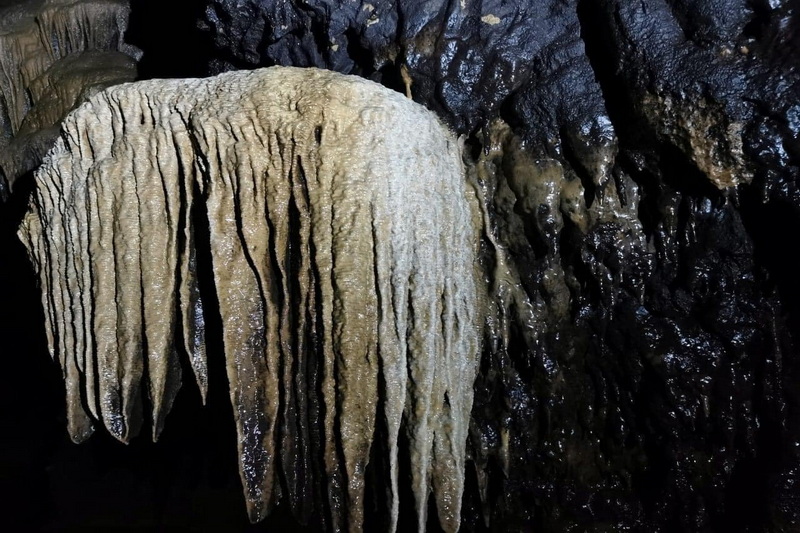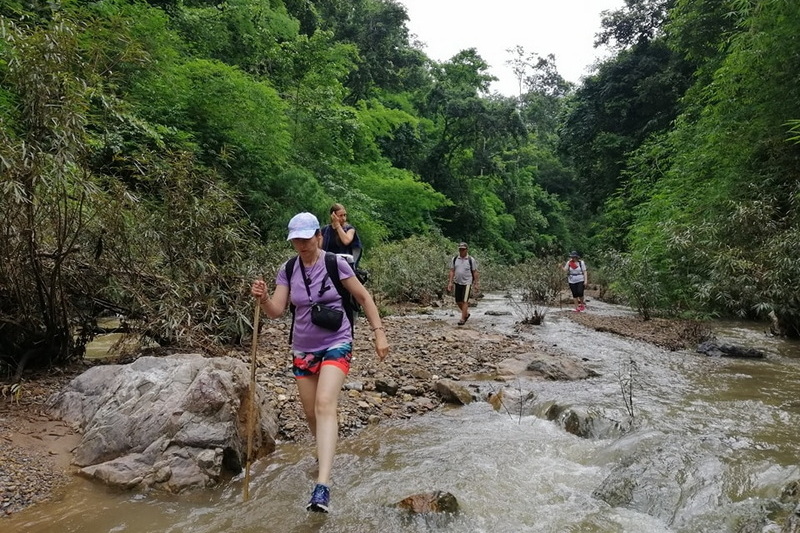Ban Pha Mon Cultural Village and Trekking Experiences
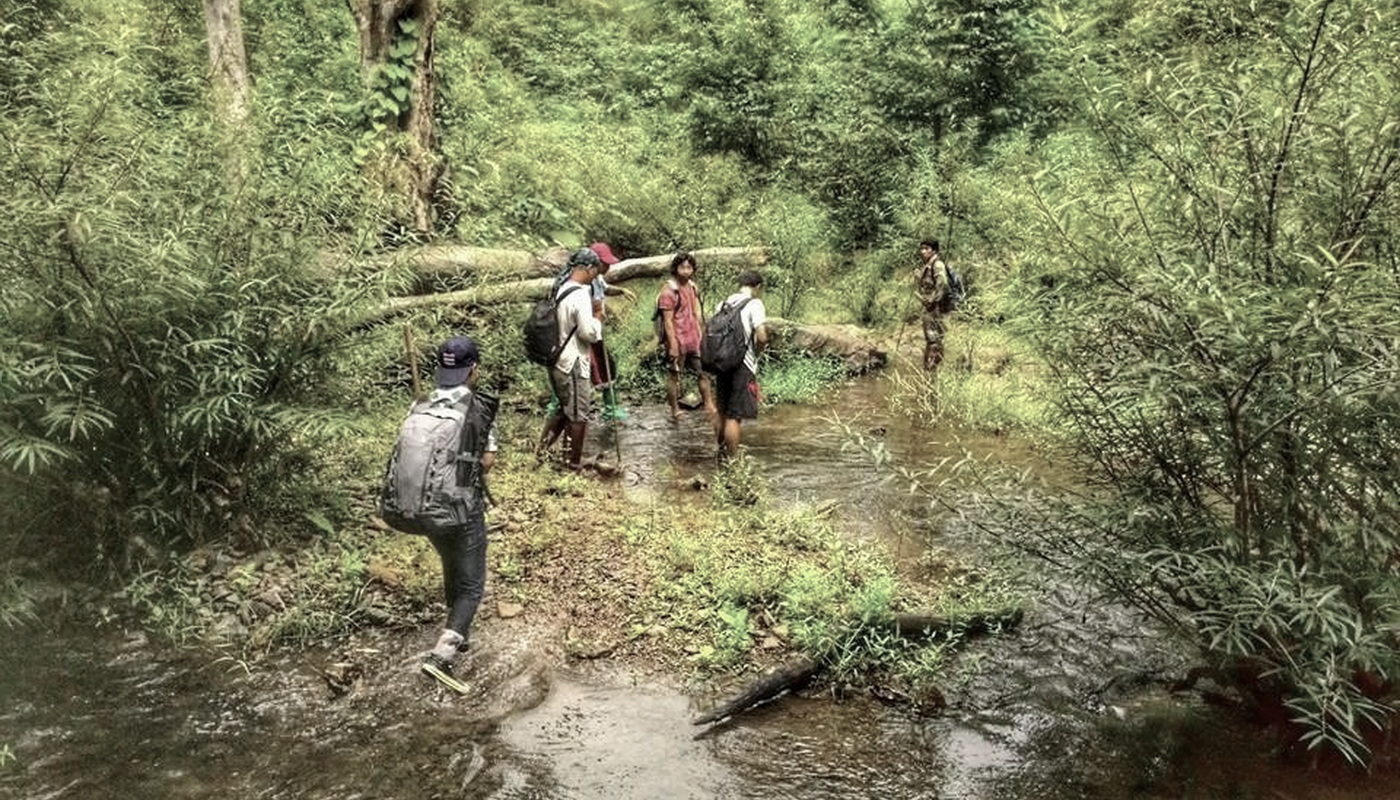
Discover Ban Pha Mon, a Red Lahu community offering cultural encounters, nature treks, and traditional life in northern Mae Hong Son.
🏞️ General Information and Geography
Ban Pha Mon is a Red Lahu ethnic community located in Pang Mapha District, Mae Hong Son Thailand, approximately 70 kilometers north of Mae Hong Son city. The village lies within a mountainous area characterized by lush forests, limestone cliffs, and terraced rice fields. Its geographical setting offers a natural environment suitable for traditional farming and eco-tourism activities. Accessible through a combination of scenic mountain driving and trekking routes, Ban Pha Mon has become part of the experience for travelers undertaking the Mae Hong Son tour through Thailand’s northern frontier.
🛖 Historical Background and Settlement Patterns
The origin of Ban Pha Mon traces back to the migratory patterns of the Lahu people, who sought fertile lands and strategic highland areas for settlement. The village developed based on traditional rotational farming methods, balancing human use with natural regeneration. Today, Ban Pha Mon preserves a harmonious blend of agricultural land, conservation forest, and communal living spaces, reflecting the sustainable lifestyle of its Red Lahu inhabitants.
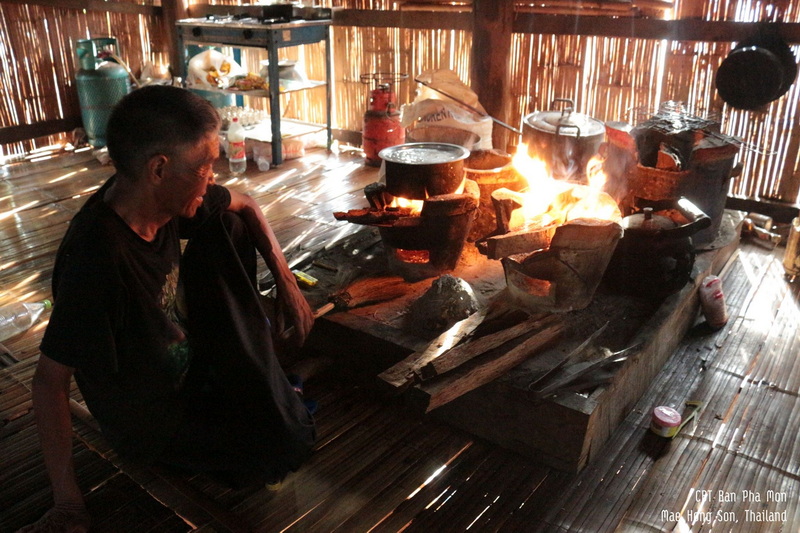
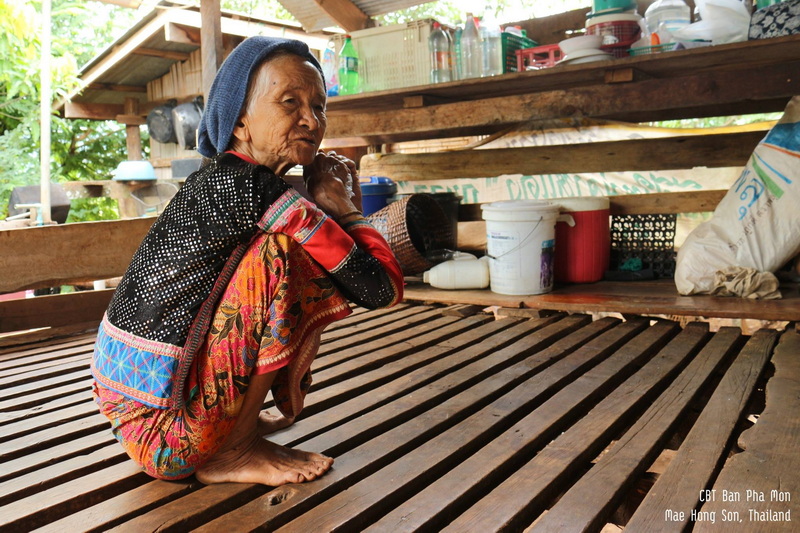
👥 Population, Social Structure, and Ethnic Identity
Ban Phamon is predominantly inhabited by the Red Lahu, also known as Lahu Nyi. The village operates under a traditional kinship system, with extended families forming the foundation of social organization. Elders play a vital role in decision-making, spiritual leadership, and the transmission of cultural knowledge. Strong communal bonds are maintained through cooperative farming, religious ceremonies, and social rituals, ensuring the continuity of ethnic identity within a rapidly modernizing context.
🌱Life Among the Hills 🌾
In Baan Jabo, life revolves around the land. The villagers practice rotational farming, growing crops like rice and corn while preserving the forest’s natural balance. If you stay overnight in a homestay, you’ll wake up to the smell of fresh herbs being prepared for breakfast. It’s a reminder of how beautiful simplicity can be.
🧣 Red Lahu Culture and Traditions
The Red Lahu people are distinguished by their vibrant traditional clothing, primarily featuring red textiles with intricate embroidery. Traditional crafts such as hand weaving, natural dyeing, and bamboo crafting remain vital parts of daily life. The Red Lahu language is still widely spoken within the village, preserving oral traditions, songs, and folklore. Cultural pride is actively nurtured through community events, and every Friday, students at the local school wear traditional Red Lahu attire to reinforce cultural heritage among younger generations.
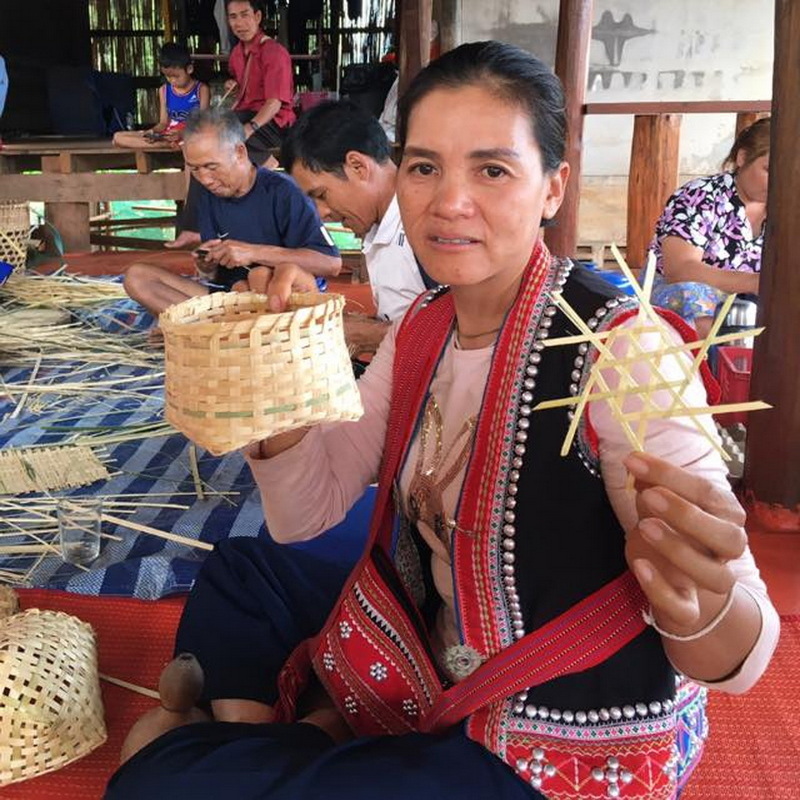
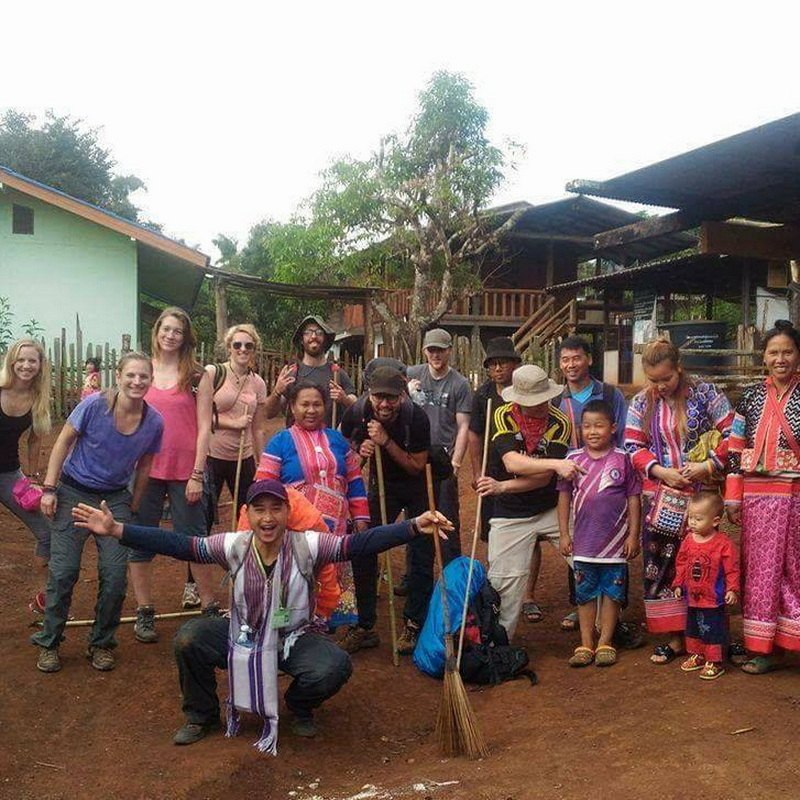
🌿 Livelihood and Way of Life
Agriculture forms the backbone of Ban Pha Mon’s economy. Rice cultivation, rotational farming, and foraging for jungle products are daily activities. Village families often maintain small gardens, livestock pens, and participate in collective forest management. Meals typically consist of sticky rice, seasonal vegetables, and locally sourced herbs. Although modern conveniences such as solar lighting have been introduced, the village largely retains its traditional ecological knowledge and self-sufficient lifestyle.
🥾 Tourism and Trekking Activities
Pha Mon village is a notable destination for trekking in Mae Hong Son, offering authentic cultural experiences combined with natural exploration. Trekking routes to the village involve approximately 4–5 hours of hiking through bamboo forests, mountain ridges, and creek crossings. Visitors can participate in eco-trekking tours, observe traditional Red Lahu weaving workshops, and join in community life. Homestay accommodations provide a unique opportunity to experience Red Lahu hospitality, local cuisine, and evening storytelling under the stars.
✨ Cultural Significance and Sustainable Development
Tourism development in Ban Pha Mon emphasizes community-led initiatives and cultural preservation. Income generated through trekking and homestay programs supports educational projects, infrastructure improvements, and cultural revitalization. Unlike commercialized tourist areas, Ban Pha Mon maintains authenticity by limiting visitor numbers and integrating tourism with local life rather than reshaping it for external consumption.
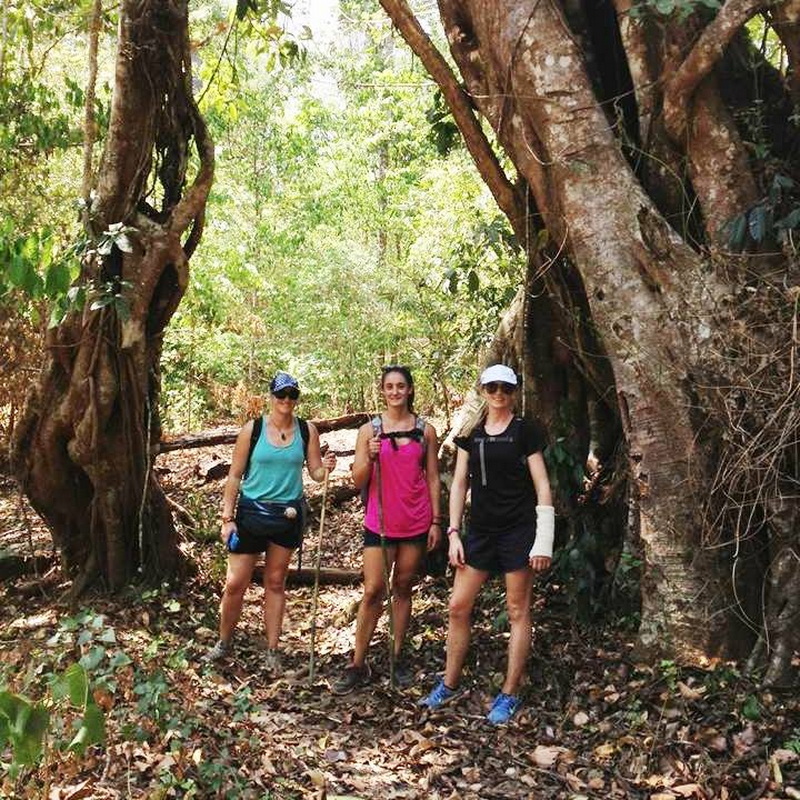
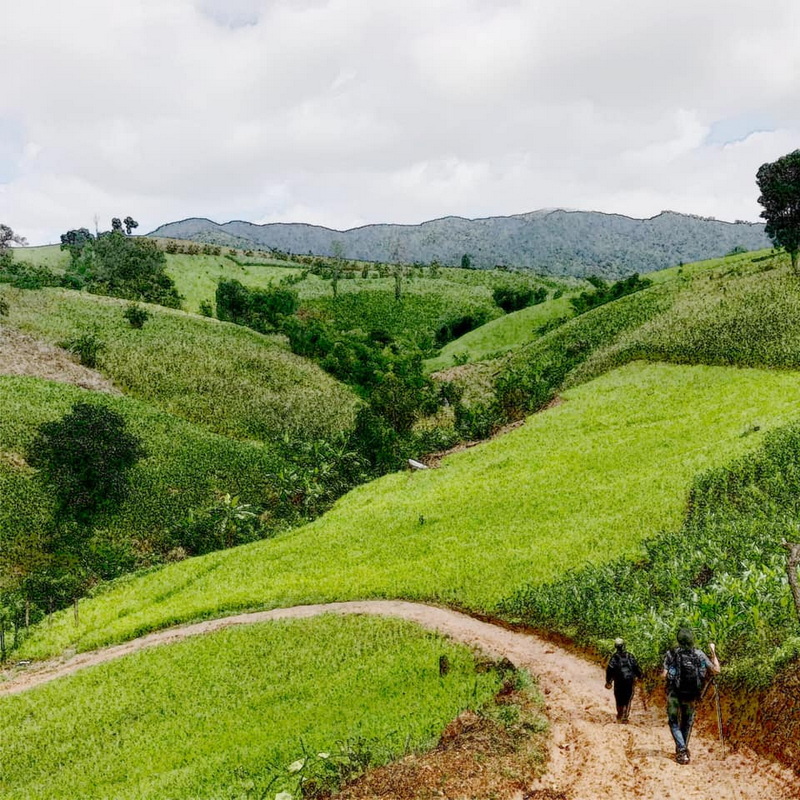
🏞️Attractions in the Village
-
Traditional Weaving Center: Demonstrations of Red Lahu weaving techniques using hand-spun thread and natural dyes.
-
Spirit House Shrine: A sacred site where villagers conduct ancestral worship and seasonal rituals.
-
Terraced Rice Fields: Expansive landscapes showcasing sustainable agricultural practices and ancient irrigation methods.
-
Forest Heritage Walks: Guided treks highlighting edible plants, medicinal herbs, and jungle survival techniques.
👉 Our Tours
🛣 Getting There
Ban Pha Mon is accessible from Chiang Mai, Pai, or Mae Hong Son via Route 1095. After passing the Pang Mapha viewpoint, travelers proceed to Pa Mai Daeng forest area, where the trekking route begins. The trek involves traversing conservation zones, traditional agricultural lands, and natural creek crossings before reaching the village.
Step beyond sightseeing—trek to Ban Pha Mon and walk into a living story of culture, mountains, and community spirit.
📍Nearby Places
A peaceful village famous for the Mae Lana Cave system and gentle eco-trekking experiences.
A Karen community offering bamboo rafting, homestay experiences, and cultural immersion in forest conservation practices.

